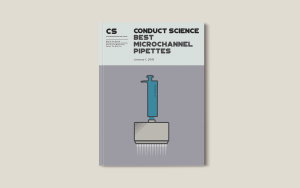
Best Microchannel Pipettes: A Comprehensive Guide
Introduction Pipetting, at first glance, would seem a fairly simple and easy task. Essentially described as glass or plastic tubes used to measure and transfer

As an Amazon Associate Conductscience Inc earns revenue from qualifying purchases
Calorimeters are defined as devices that measure heat flow in thermodynamic systems, as well as the specific thermal capacity of different substances. Given the importance of heat changes during physical and chemical reactions, it’s no surprise that calorimeters are invaluable educational and scientific tools.
Interestingly, measurements of heat changes or enthalpy weren’t common before the 18th century. It was the Scottish physicist and chemist Joseph Black who made the distinction between heat and temperature and the English physicist and mathematician James Joule who defined heat as a form of energy, which fostered calorimetric measurements in the 19th century. Note that the derived unit of energy J (joule) was named after James Joule.
With the advancements in thermodynamics, calorimeters became a focus of scientific interest. The first basic calorimeter was an ice calorimeter created by the French chemist Antoine Lavoisier in collaboration with the French scholar Pierre-Simon Laplace. Note that the term calorimeter was coined by Lavoisier in 1780. Yet, it was the French chemist Marcellin Berthelot who constructed the first modern calorimeter in the 1860s.
Now there are different types of calorimeters designed for different research purposes and applications. While some units are created for professional use, others are suitable for school settings and home use. Some of the most common types include reaction calorimeters, scanning calorimeters, isothermal microcalorimeters, accelerated rate calorimeters, and electromagnetic calorimeters.
Measuring heat flow is essential in numerous scientific, engineering, and everyday aspects. After all, heat exchange can be observed directly or indirectly almost everywhere – especially when we start sweating in a crowded room. With a wide variety of products designed for different research and educational purposes, however, choosing a calorimeter can be challenging. Prospective buyers should consider three major factors:
Requirements: Before purchasing a unit, users should define the specific testing procedures they want to do. A nutritionist who wants to measure food calories, for example, will need a different calorimeter than a student who wants to observe chemical reactions. Sample capacity and precision should also be considered. While some scientists can benefit from a unit that can handle several samples at a time, young learners will benefit from basic single calorimeters and transparent equipment to observe chemical reactions closely.
Specifications: From adiabatic to x-ray microcalorimeters, calorimeters come in different shapes and sizes, with each type being designed differently for different research purposes. As stated above, sample capacity and precision should be considered. Other considerations cover weight (especially if units should be transported), size, and power source. Note that two of the main types suitable for beginners and home use are the coffee cup and the bomb calorimeter. The coffee cup calorimeter is a type of constant-pressure calorimeter. This device is easy to use and ideal for solution-based chemistry and small samples. The bomb calorimeter, on the other hand, is a sealed reaction calorimeter ideal for solids and high temperate reactions. Bomb calorimeters are highly accurate and precise.
Total costs: Deciding on a budget is also essential. Note that calorimeters designed for laboratory use are more sophisticated and expensive. The build quality is a major concern when buying a calorimeter; as calorimeters should handle heat reactions, safe and reliable units are a must. To provide an example, reaction calorimeters should ideally come with double walls. Additional features and replacement equipment should also be considered. In fact, some calorimeters are marketed as kits with additional accessories, such as thermometers and batteries. Additionally, reputable brands can ensure adequate delivery and return policies.
Calorimeters are essential tools in calorimetry, the science of measuring energy changes. However, users should be aware that each type is designed for different research purposes. As stated above, bomb calorimeters are suitable for high-temperature reactions, while coffee cup calorimeters are ideal for solution-based experiments. Based on detailed research, different applications, and user reviews, here are the best calorimeters on the market suitable for both young learners and seasoned hobbyists.
1. Eisco Labs Food Calorimeter
Eisco Labs Food Calorimeter is a convenient and safe calorimeter. The model is suitable for educational purposes and home use, allowing users to calculate the number of food calories by the amount of heat released. This calorimeter includes a cylindrical metal stand, a food sample holding assembly (cork with nail), an Erlenmeyer flask (125 ml), a metal suspension plate, and a rubber stopper. Eisco Labs Food Calorimeter is a compact unit, which comes with an experiment guide to help users understand the relation between energy changes and food consumption.
2. Eisco Copper Polished Calorimeter Set – 75 mm Diameter x 100 mm Height
Eisco Copper Polished Calorimeter Set – 75 mm Diameter x 100 mm Height is another popular Eisco model for measuring heat flow. Note that the unit’s polished copper design is not only attractive but ensures high thermal conductivity. The set contains an inner (75 mm height x 50 mm diameter) and outer vessel (100 heights x 75 mm diameter), a lid, and a stirrer. A thermometer can be attached to assess temperature changes (sold separately). With its advanced design, Eisco Copper Polished Calorimeter Set is a wonderful science education tool.
3. Eisco Premium Double Wall Calorimeter – 150 ml Capacity
Eisco Premium Double Wall Calorimeter – 150 ml Capacity is a high-quality double wall unit that has an aluminum reservoir with 150 ml capacity, an aluminum outer wall, a plastic insulator ring, and Styrofoam lining. The lid accepts a stirrer and a thermometer cork. The unit’s capacity is ideal for diverse samples, while its aluminum design ensures high thermal connectivity. Note that its removable spring heating element is easy to maintain. Eisco Premium Double Wall Calorimeter is a wonderful product that operates on 3–6V DC and runs at around five watts.
4. Eisco Block Style Calorimeter – Brass
Eisco Block Style Calorimeter – Brass is another excellent product designed to measure the specific heat of materials. Note that it is adjusted to an accuracy of +2%. The unit comes with an inner and outer vessel, a sealing lid, and a stirrer. Its attractive and polished copper vessel is a durable conductor of heat, while its inner vessel is equipped with cork support to prevent scratches. Note that Eisco Block Style Calorimeter – Brass has a diameter of 44.45 mm x 85.725 mm.
5. SEOH Calorimeter for Heat Capacity and Electrical Equivalent
SEOH Calorimeter for Heat Capacity and Electrical Equivalent is an affordable unit for determining heat capacity and electrical equivalent. This calorimeter consists of an outer (127 mm height x 101 mm diameter) and an inner part (50.8 mm height x 50.8 diameter), with an insulated space in-between. The unit has a transparent cover with a heating coil, a stirrer, and a rubber stopper for a thermometer (sold separately). Note that SEOH Calorimeter for Heat Capacity and Electrical Equivalent works on 6V DC.
6. Carolina Biological Supply Company Calorimeter, Double Wall
Carolina Biological Supply Company Calorimeter, Double Wall, is another reliable model with aluminum construction. The unit has a 200-ml inner vessel and a 750-ml outer vessel, a stopper, a stirrer, and a transparent cover. Note that there’s Styrofoam to insulate the inner vessel from the outer vessel for accurate readings. Carolina Biological Supply Company Calorimeter, Double Wall comes with clear instructions, ideal for learners and hobbyists.
7. Ajax Scientific Double Wall Calorimeter
Ajax Scientific Double Wall Calorimeter is a great product used to determine factors, such as specific heat, the heat of fusion, and heat of vaporization. It comes with two aluminum vessels, with both the inner and the outer ones sharing the same dimensions (65 mm depth x 80 ml height). This calorimeter also has a plastic ring for the inner calorimeter and a lid with two holes for a stirrer (included) and thermometer (sold separately). Note that Ajax Scientific Double Wall Calorimeter is easy to clean and maintain.
8. GSC International 4-30421 Electric Calorimeter
GSC International 4-30421 Electric Calorimeter is an affordable unit designed to measure the potential heat capabilities of solid or liquid fuels. The unit contains a cover with a mounted heating coil (1.5 ohms resistance), an insulated stirrer, and a rubber stopper. Note that when connected to a 6V battery, the coil rises to 5 degrees centigrade in 10 minutes. Last but not least, GSC International 4-30421 Electric Calorimeter comes with detailed instructions to facilitate use.
Although choosing a calorimeter can be daunting, these scientific units are worth investing in. Nevertheless, prospective buyers should understand that adequate use and maintenance can only guarantee a long lifetime and accurate measurements.
Calorimeters are invaluable tools that measure heat flow and capacity. There are numerous designs suitable for different purposes and settings, such as chemistry, physics, and nutrition science. While sophisticated models can accommodate large and multiple samples, which is ideal for lab research, small and basic calorimeters are suitable for home use and young learners. Note that transparent equipment is ideal for educational settings, allowing students to observe reactions closely. With a wide variety of models, however, choosing a unit can be challenging. Users should consider three major factors: requirements, specifications, and total costs. One of the main aspects to consider is the materials employed in order to guarantee safe use and accurate measurements.
Although calorimetry is a relatively new science, we have to agree that calorimetry is a fundamental experimental technique allowing direct measurements of physical and chemical reactions.

Introduction Pipetting, at first glance, would seem a fairly simple and easy task. Essentially described as glass or plastic tubes used to measure and transfer

Resource Identification Initiative: A Key to Scientific Success and Analytics The key to success can be found in the essential principles of the Resource Identification

INTRODUCTION AND BRIEF HISTORY One of the most important pieces of equipment in the laboratory is the centrifuge, which facilitates the separation of samples of
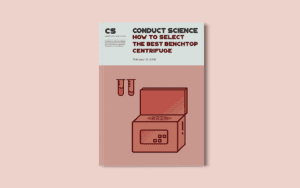
INTRODUCTION AND BRIEF HISTORY One of the most important pieces of equipment in the laboratory is the centrifuge, which facilitates the separation of samples of
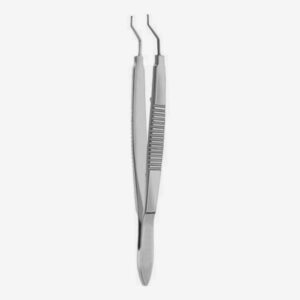

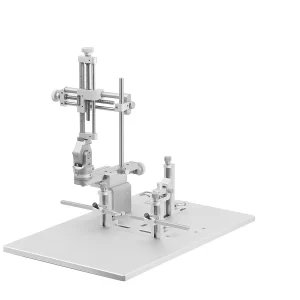
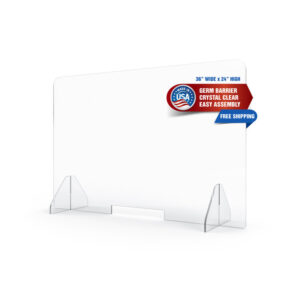
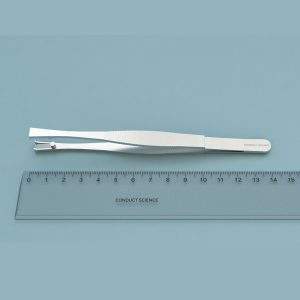

DISCLAIMER: ConductScience and affiliate products are NOT designed for human consumption, testing, or clinical utilization. They are designed for pre-clinical utilization only. Customers purchasing apparatus for the purposes of scientific research or veterinary care affirm adherence to applicable regulatory bodies for the country in which their research or care is conducted.